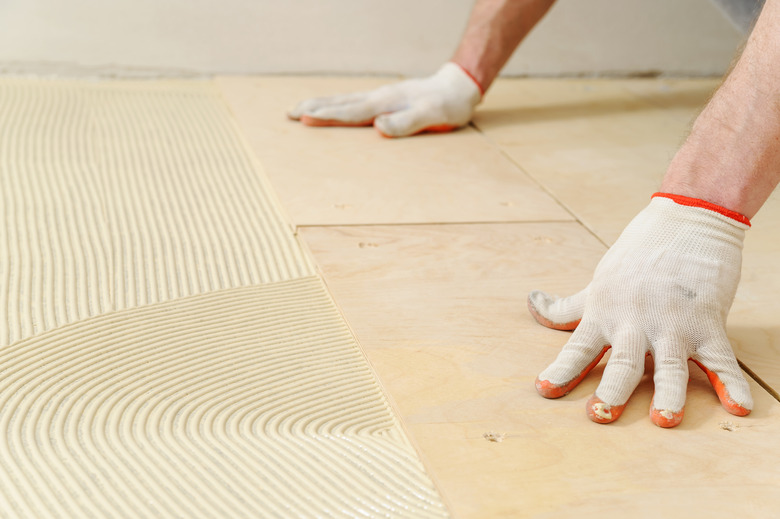What Grade Plywood Do You Use For Underlayment?
We may receive a commission on purchases made from links.
When it comes to homebuilding, plywood is among the most used materials. It's on the walls, the roof, the subfloors, and anywhere else a smooth, solid base is needed. With flooring, plywood is the preferred choice for many builders not only for subfloors but for underlayment too. Grades and thicknesses for underlayment are quite different from those used as subfloors.
Common Choices for Underlayment
Common Choices for Underlayment
Plywood is a popular underlayment option, but there are others from which to choose, like oriented strandboard (OSB), hardboard, and cement board. Each has different features and vulnerabilities. Moisture can be a big problem for OSB or chipboard underlayment, for instance.
Underlayment is usually meant to be thin — it's recommended by BuildDirect to be no thinner than 11/32 inch — so there aren't issues with flooring affecting baseboard height or impeding doorways.
Flooring types and the residence styles influence what choices might be best for you. Whether it's a sound-dampening felt for a rental suite, a budget-friendly plywood in a cabin, or microbial foam under a vinyl floor in a flood plain, there's both a subfloor and an underlayment that's best for your project. Check with the flooring manufacturer's recommendations for the best underlayment, but keep in mind that they may be the manufacturers of what they're recommending you buy.
Plywood Suited for Underlayment
Plywood Suited for Underlayment
Recommendations aside, plywood is one of the most versatile underlayments because it will give you that nice, smooth surface needed for a flawless vinyl or carpet installation, and it works under most other products too. To ensure you're getting a great product, look for the "APA" stamp — it's the hallmark of the Engineered Wood Association, a nonprofit organization representing woodmills that manufacture about 80 percent of the structural wood panel products made in the United States.
APA-rated Sturd-I-Floor plywood is ideal for underlayment when the surface is integral to how your flooring will perform. Blemishes and flaws could cause uneven wear and tear or damage to your flooring if it's not sitting flush. This is especially important with vinyl and adhered carpets.
The APA has a rating system so you can trust it's the right sheet for the right job. The APA stamp contains all kinds of information, and the Sturd-I-Floor underlayment rating will tell you how smooth each side of the underlayment is. While having treated plywood may seem like a great idea, it's often not recommended as underlayment since it could hinder adhesion.
Understanding APA Grades of Underlayment
Understanding APA Grades of Underlayment
Depending on the product you're using, you may need a more flawless finish. When it comes to the gradings on APA's stamps, the underlayments will have a letter grade between A and D, but you'll see letter-combo gradings, like "AD." The "A" denotes the top grade of veneer with the least number of flaws or blemishes and the smoothest surface. The "D," however, indicates that it's the most flawed and should not be exposed or facing out and also shouldn't be used as the base for something like tiling when you want a perfectly level, smooth floor.
When you see the double-letter score, that means the front is the first letter, and the back of the plywood is the second. Only one side needs to have the smooth finish, which keeps prices down.
Visit your local lumberyard to learn more about what's available for your plywood underlayment needs and whether it's suited to your flooring product.
